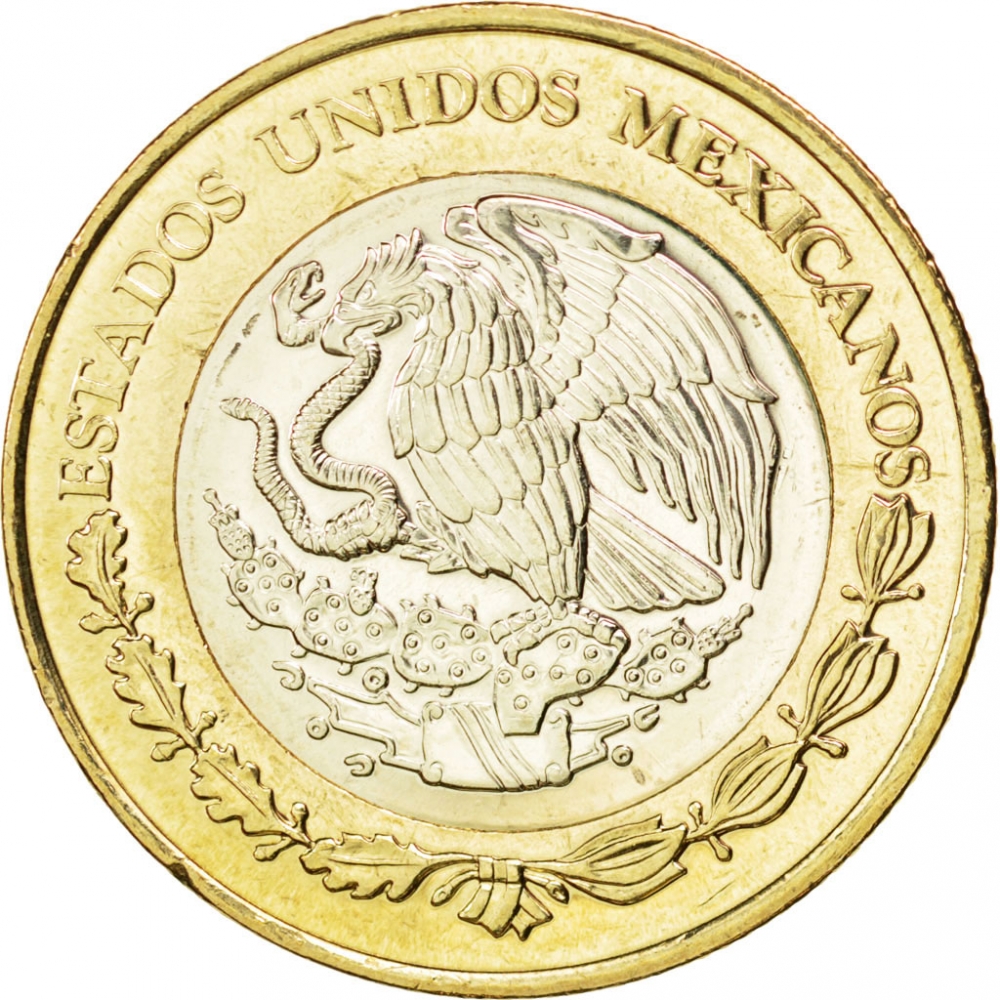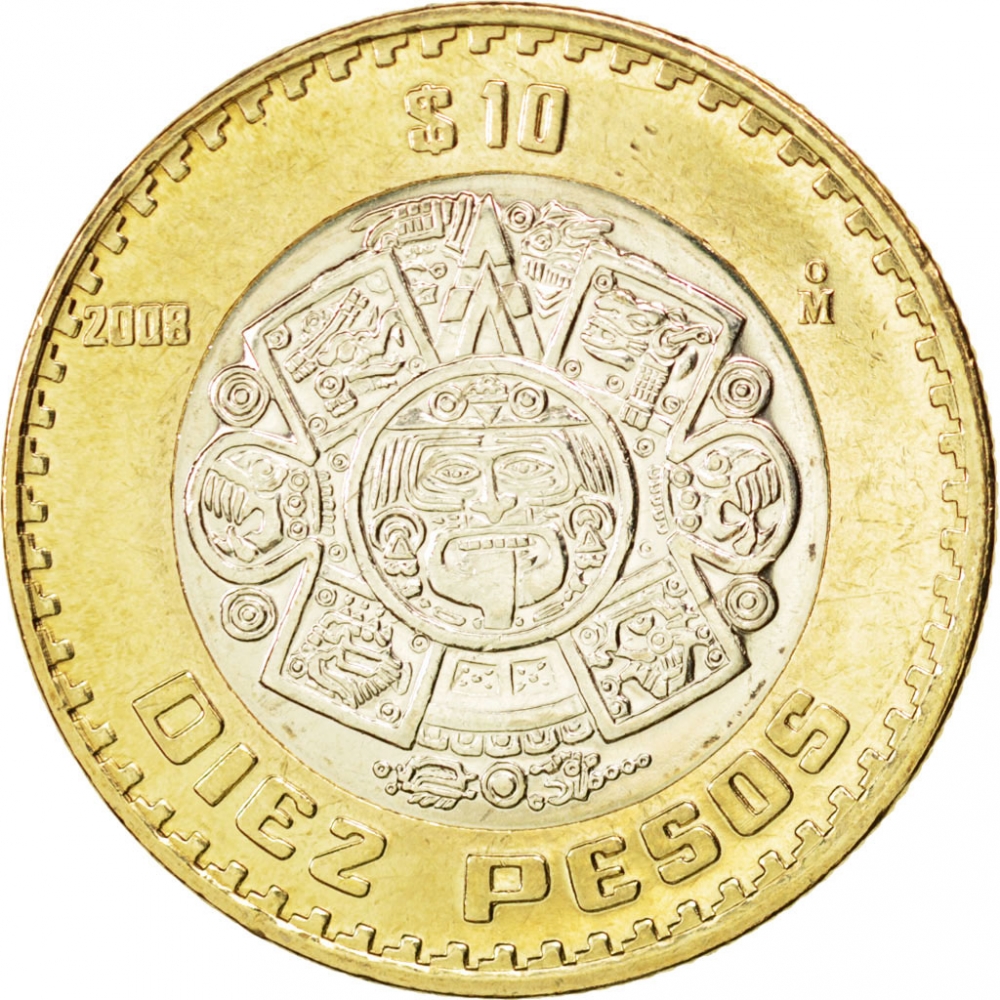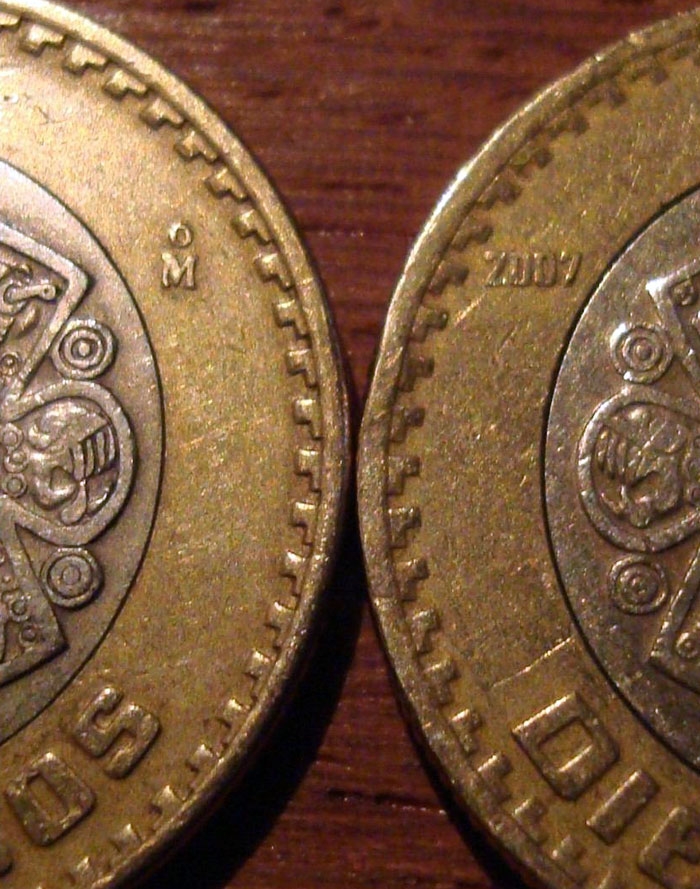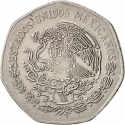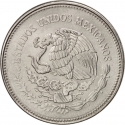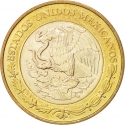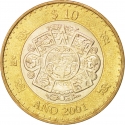You are about to finish your registration. Please check your mailbox (including spam folder). There should be a letter with a confirmation link. Check setting to make sure that your e-mail address is correct.
Send letter againDescription
In 2007 an unknown number of coins were minted with an error called "inverted beading" (grafila invertida) which means the L-shaped beads or denticles around the border of the coin are facing right, not left, as is normal.
Obverse

|
Depicts the seal of the United Mexican States. ESTADOS UNIDOS MEXICANOS |
|---|---|
Reverse

|
In the center, the circle of the Sun Stone representing Tonatiuh with the fire mask. In the peripheral ring, top center the value; to the left the mint year, and to the right the symbol of the Mint of Mexico Mo; at the bottom, the inscription. The frame is smooth with an uneven edge. $10 |
| Edge |
Characteristics
| Material | Bi-Metallic |
| Ring | Aluminium Bronze |
| Center | Copper Nickel Zinc |
| Weight | 10.329 g |
| Diameter | 28 mm |
| Thickness | 2.3 mm |
| Shape |
|
| Alignment | Coin |
| Mint |
Mexican Mint (Mo)
|
